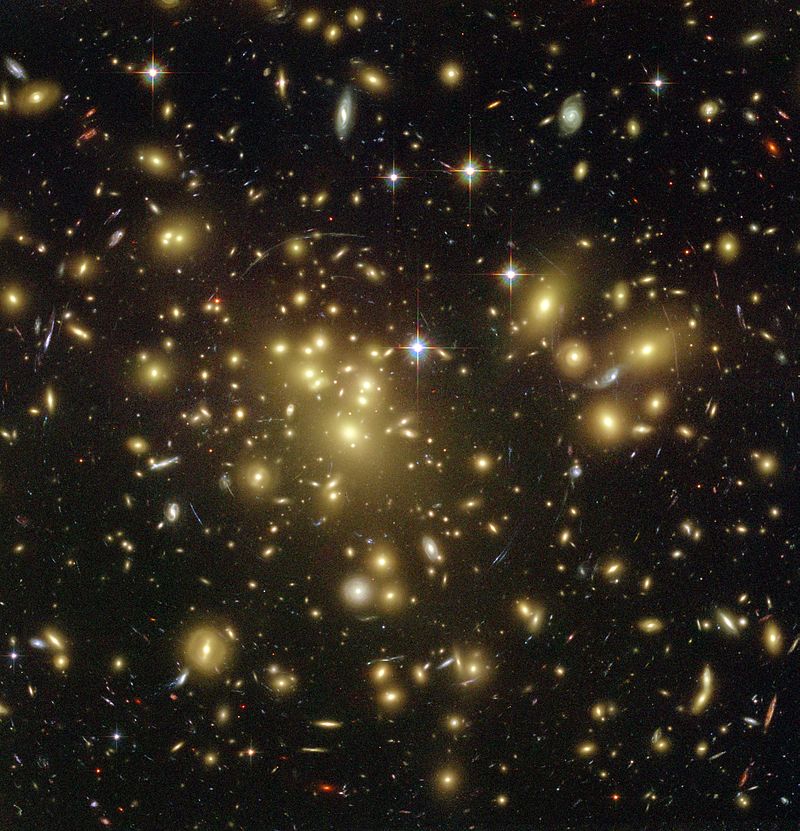Gravitational Lensing
Gravitational lensing is an astrophysical technique which uses the observed path of light from distant objects to both infer characteristics of foreground mass distributions, and to image background sources at much higher resolution than is possible with normal telescopes. Researchers at the University of Melbourne have a long history of developing innovative applications for gravitational lensing.
Supervisor Profiles & Available Research Projects
Prof Rachel Webster
- Gravitational weak lensing
- Quasar microlensing
A/Prof Christian Reichardt
- Gravitational lensing of the Cosmic Microwave Background

The Abell 1689 galaxy cluster acts as a massive gravitational lens in space, bending and magnifying the light of the galaxies located far behind it.
Courtesy: NASA/JPL-Caltech
- Using Asteroseismology to Measure an Integrated Mass Loss for Evolved Stars in Globular Clusters Wednesday 14 Sep 2022 @ 12:00 p.m., Level 6 Geoff Opat([...]
- Understanding X-Ray Signatures of Outflows Through 3-D Simulations Wednesday 07 Sep 2022 @ 12:00 p.m., Level 6 Geoff Opat([...]
- Orbital structures of SAMI passive galaxies from orbit-superposition Schwarzschild models. Wednesday 31 Aug 2022 @ 12:00 p.m., Laby Theatre(+Zoom)[...]
- On Modelling Complex Systems in Astronomy Wednesday 17 Aug 2022 @ 12:00 p.m., Laby Theatre(+Zoom)[...]
- Hydroxyl as a Probe of the Interstellar Medium Wednesday 10 Aug 2022 @ 12:00 p.m., Zoom Dr Anita Petzl[...]
- How do galaxies regulate their own star formation? Wednesday 03 Aug 2022 @ 12:00 p.m., Laby Theatre(+Zoom)[...]
- Leaks and bursts Wednesday 27 Jul 2022 @ 12:00 p.m., Laby Theatre(+Zoom)[...]